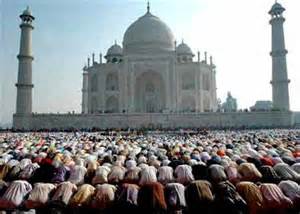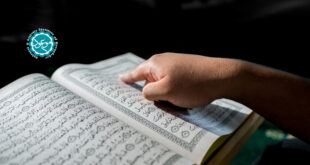“Husain is everybody’s hero, the embodiment of virtues of piety, courage and self-sacrifice. He did not seek power. “He represented the authentic voice of Islam and, for that reason, boldly challenged the un-Islamic practices of the Umayyad ruler, Yazid,” a member of the Raikwar family said. They also march, as they do year after year, through the lanes and by-lanes in fervent lamentation chanting, “Ya-Husain, Ya-Husain”, rhythmically beating their chests, self-flagellating, carrying replicas of Imam Husain’s tomb.
“Husain laid down his life but did not compromise with a bloody-minded tyrant,” says the head of the Mishra family of Sehore, another Madhya Pradesh town where a Hindu family takes out the Tazia procession. “The practice is over 100 years old for our family. We have also secured a place for `Bade Baba Sahib’ in our house where hundreds of Hindus and Muslims visit during Muharram to seek Imam Husain’s intercession to cure the diseased, avert calamities and even procure children,” says Dinesh Chandra Mishra, present head of the family. “Every age brings forth a new Yazid, but resistance to tyranny, as is illustrated by Husain’s legendary example, is incumbent upon every man of faith”, he says.
“The Hindu”, one of the largest selling English daily in India reported in its 31 January, 2007 issue that a large number of Hindus participated in the `Tazia’ procession along with Muslims at Pulimankulam in Tamil Nadu state. The procession was led by V. Nayaz Ahmed Bijili and H. Habeebur Rahman Bijili, hereditary trustees of the Athangarai Pallivasal Dargah. Hindus from Sokkalingapuram, Urumankulam, Tiruvamabalapuram and Avudayalpuram, marched towards the `chavadi’, where the `Panjas’ were installed, and offered prayers.
Three persons, two of them non-Muslims, took part in a firewalk held in the early hours. Syed Ache Miyan, hereditary Mujaver, led the rite in which Veerabahu Asari (55 years old) of Sokkalingapuram and Arumugam Yadav (28 years old) of Pulimankulam participated. Mr. Veerabahu has been taking part in the firewalks for the past 25 years. Last year, about 10 persons participated two of them Muslims.
The Hindus, who take part in the fire walk, adhere strictly to fasting as do the Muslims. Many of them also read the Tamil version of Shahadat naama, which depicts the tale of the martyrdom of Imam Husain in the war of Karbala.
Hindus of these villages vie with the Muslims in making arrangements for the Muharram. They fell trees on their farms to prepare wood for the firewalk. A group of Hindu volunteers stayed around the `alaawa’ (the fire pit) throughout the night.
According to the residents of Pulimankulam, Hindus and Muslims have been observing Muharram jointly for the past many decades.
There is a Brahmin tribe by the name of Mohiyals in Kashmir who take part in Muharram observance with great devotion and fervor. They believe that their ancestors fought with Imam Husain (A.S.) at Karbala and later, avenged Imam Husain’s killing by fighting the Umayyads. They believe that they traveled back to India over the centuries via Afghanistan.
“The Hindu”, English daily published from Chennai and many other cities in India also reported in its 31 January, 2007 issue that hundreds of Hindus joined Muslims in observing Muharram in an Orissa village, ending a 25-year-old conflict over the ownership of a burial ground.
Hindus and Muslims in Peteipur village had clashed many times over 1.75 acres of land that the former wanted for a cremation ground. The Muslims wanted the plot for a Muslim graveyard, said a district police official.
“But this year we decided to end the conflict,” Naresh Acharya, the village leader and a Hindu, told The Hindu.
According to Acharya, more then a hundred villagers participated in the procession on 10th Muharram to mourn the martyrdom of Imam Husain(A.S.), the grandson of Prophet Muhammad(S.A.W.A.).
“We joined the Muslims and observed Muharram by participating in their tazia (replicas of Imam Hussain’s tomb) procession. We do not have any dispute now,” Acharya said.
The local administration has also identified and demarcated land for use by both communities as cremation grounds and ‘kabristan'(cemetery) following a court order on the petitions filed by both communities, he said.
Peteipur village in the coastal district of Jagatsinghpur, 70 km from Bhubaneswar, has a population of 2,000, including 1,200 Muslims of whom 800 are Shias.
The anti-Muslim riots broke out on February-March, 2002 in Gujrat state, But after this anti-Muslim riots in the next years’ month of Muharram “Tazia” processions were taken out in the cities, towns and villages of Gujrat state by the Muslims with the cooperation of Hindus. Many Hindu families generously contributed in cash for setting up the Tazias.
The tenth day of the month of Muharram (Ashura) is a national holiday in India.
This sacrifice is remembered everywhere in the world, but nowhere is it observed as in India for it has merged seamlessly into the Indian milieu.
Husaini Brahmin Sect
Perhaps the most interesting case of Hindu veneration of Imam Husain (A.S.), is to be found among the small Husaini Brahmin sect, located mostly in Punjab state in India, also known as Dutts.
Unlike other Brahmin clans, the Husaini Brahmins have had a long martial tradition, which they trace back to the event of Karbala. They believe that an ancestor named Rahab traveled all the way from Punjab to Arabia and there developed close relations with Imam Husain (A.S.). In the battle of Karbala, Rahab fought in the army of the Imam Husain (A.S.) against Yazid. His sons, too, joined him, and most of them were killed. Imam Husain, seeing Rahab’s love for him, bestowed upon him the title of sultan or king, and told him to go back to India. It is because of this close bond between their ancestor Rahab and Imam Husain (A.S.)that the Husaini Brahmins got their name.
After Rahab and those of his sons who survived the battle of Karbala reached India, they settled down in the western Punjab and gradually a community grew around them. This sect, the Husaini Brahmins, practiced a blend of Islamic and Hindu practices, because of which they were commonly known as ‘half Hindu, half Muslim’.
But there is also another version of how the Dutts of Punjab came to be known as Husaini Brahmins. One of the wives of Imam Husain (A.S.), the Persian princess Shahr Banu, was the sister of Chandra Lekha or Mehr Banu, the wife of an Indian king called Chandragupta. When it became clear that Yazid was adamant on wiping out Imam Husain (A.S.), the Imam’s son Ali ibn Husain (A.S.) rushed off a letter to Chandragupta asking him for help against Yazid. When Chandragupta received the letter, he dispatched a large army to Iraq to assist the Imam. By the time they arrived, however, the Imam had been martyred. In the town of Kufa, in present-day Iraq, they met with one Mukhtar Saqaffi, a disciple of the Imam, who arranged for them to stay in a special part of the town, which even today is known by the name of Dair-i-Hindiya or ‘the Indian quarter’.
 Mouood Mouood English Edition
Mouood Mouood English Edition




